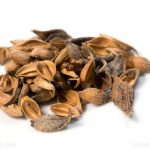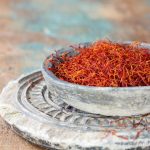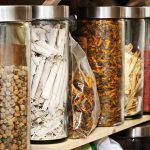
TCM’s Forsythia fruit is a detoxifying herb with antitumor effects
Monday, June 17, 2019 by Michelle Simmons
http://www.naturalnewsherbs.com/2019-06-17-forsythia-fruit-in-tmc-is-a-detoxifying-herb-with-antitumor-effects.html

Researchers from the University of Macau and China Academy of Chinese Medical Sciences examined the antitumor effects of an aqueous extract obtained from Forsythia suspensa or lian qiao in traditional Chinese medicine. The results of their study were published in The American Journal of Chinese Medicine.
- F. suspensa is one of the most fundamental herbs in traditional Chinese medicine (TCM).
- According to TCM theory, it is a typical heat-clearing and detoxifying herb.
- In this study, the researchers used the aqueous extract of F. suspensa (FAE) on B16-F10 melanoma cells in vivo.
- The researchers transplanted the melanoma cells in C57BL/6 mice to evaluate the antitumor effects of FAE.
- They reported that FAE strongly inhibited the growth of melanoma cells in vitro and the growth of tumors in vivo.
- FAE also significantly prolonged the survival time of tumor-bearing mice.
- Additionally, FAE suppressed the proliferation of cancer cells and angiogenesis in the tumor, as evidenced by a decrease in Ki67 and CD31 expression.
- Treatment with FAE reduced inflammation and decreased oxidative stress in the tumor by decreasing the expression of ROS, MDA, TNF-a, and IL-6.
- On the other hand, FAE treatment upregulated the expression of antioxidant proteins Nrf-2 and HO-1, tumor suppressors P53 and p-PTEN, and the MAPK pathways in tumor tissues.
Based on these findings, the researchers concluded that the antitumor effect of FAE involves decreasing oxidative stress and inflammation in the tumor.
For more studies on the antitumor effects of F. suspensa and its other health benefits, visit ChineseMedicine.news.
Journal Reference:
Bao J, Ding R, Zou L, Zhang C, Wang K, Liu F, Li P, Chen M, Wan JB, Su H, et al. FORSYTHIAE FRUCTUS INHIBITS B16 MELANOMA GROWTH INVOLVING MAPKS/NRF2/HO-1 MEDIATED ANTI-OXIDATION AND ANTI-INFLAMMATION. The American Journal of Chinese Medicine. 19 July 2016;44(5):1043-1061. DOI: 10.1142/S0192415X16500580
Tagged Under: Tags: alternative medicine, alternative treatment, angiogenesis, anti-inflammation, anti-inflammatory, anticancer, antioxidant, antioxidants, antitumor, cancer, cancer cures, cancer growth, cancer prevention, cancer proliferation, cancer solutions, cancer survival, cancer treatment, detoxifying, disease treatments, Forsythia fruit, Forsythia suspensa, fundamental herb, goodcancer, goodhealth, goodmedicine, goodscience, healing, herbal medicine, Herbs, inflammation, lian qiao, longevity, melanoma, melanoma cells, natural cures, natural medicine, natural treatment, oxidative stress, prevention, remedies, research, TCM, traditional Chinese medicine, tumor growth





